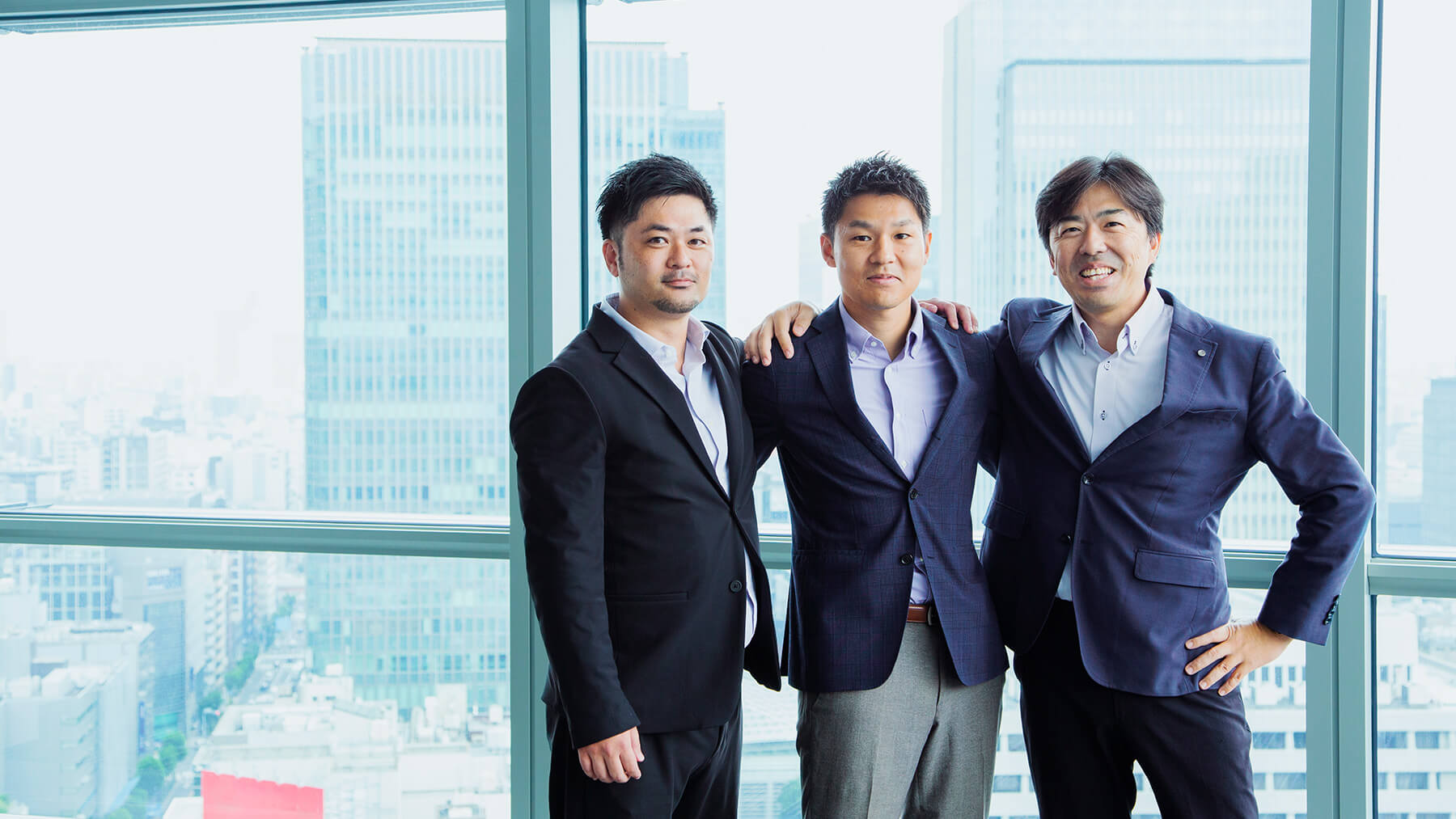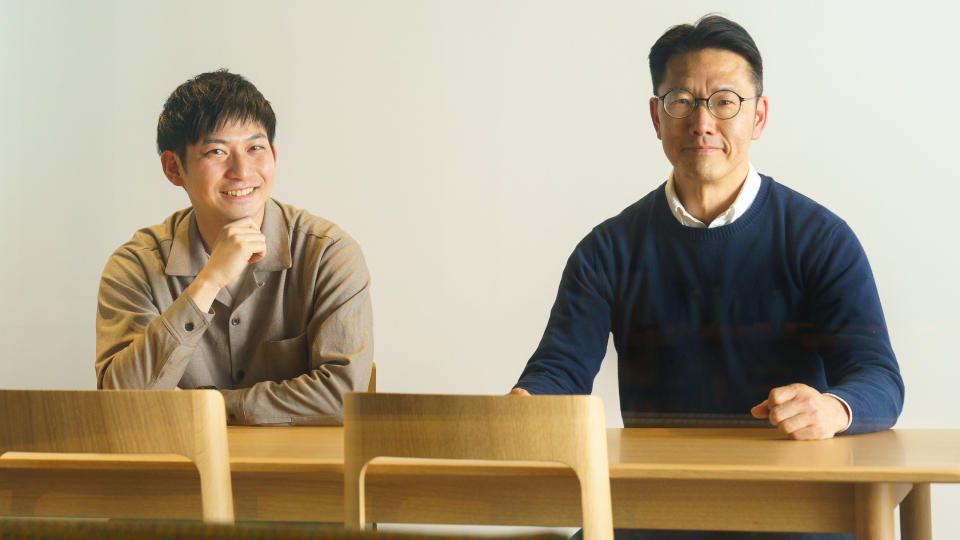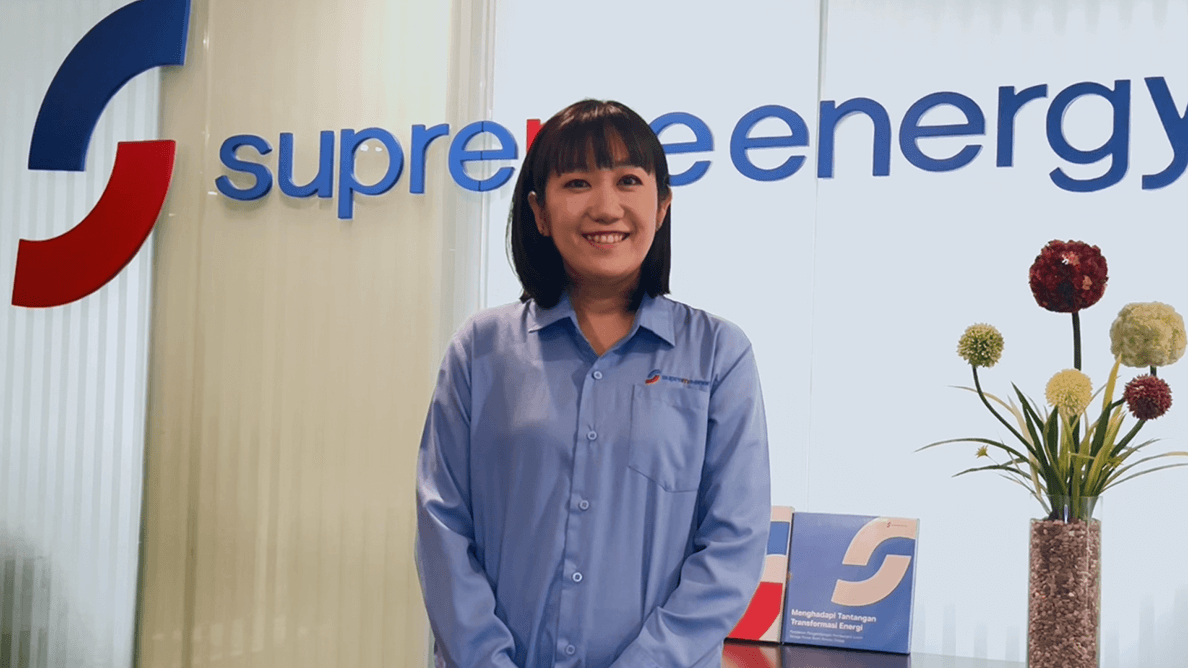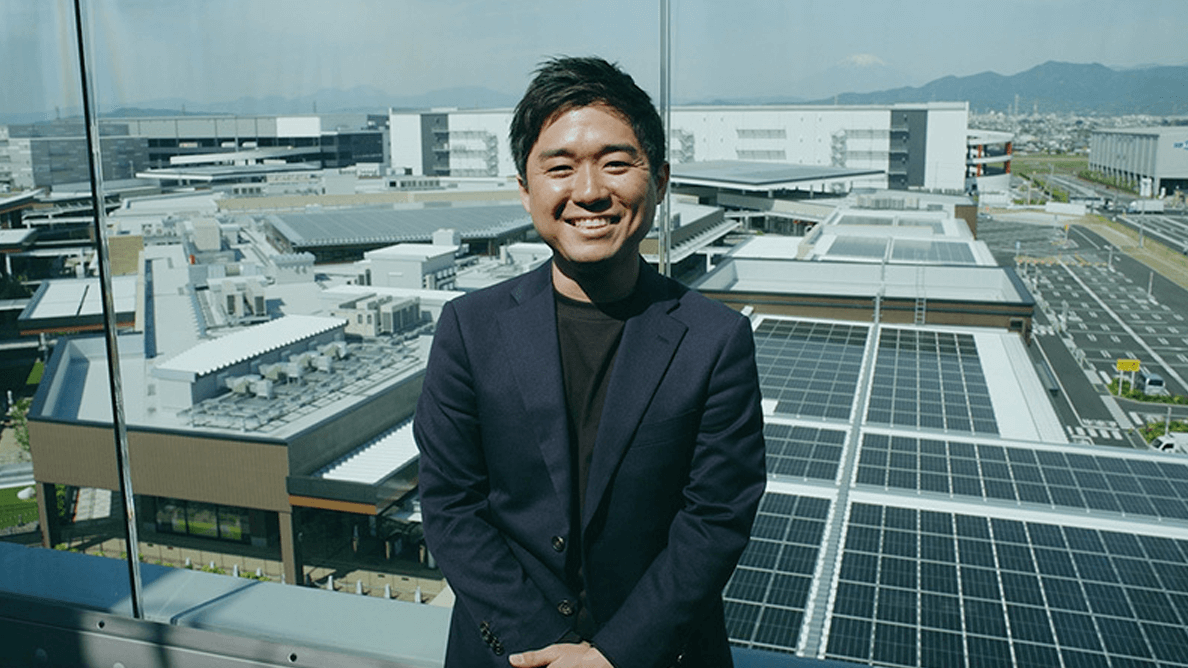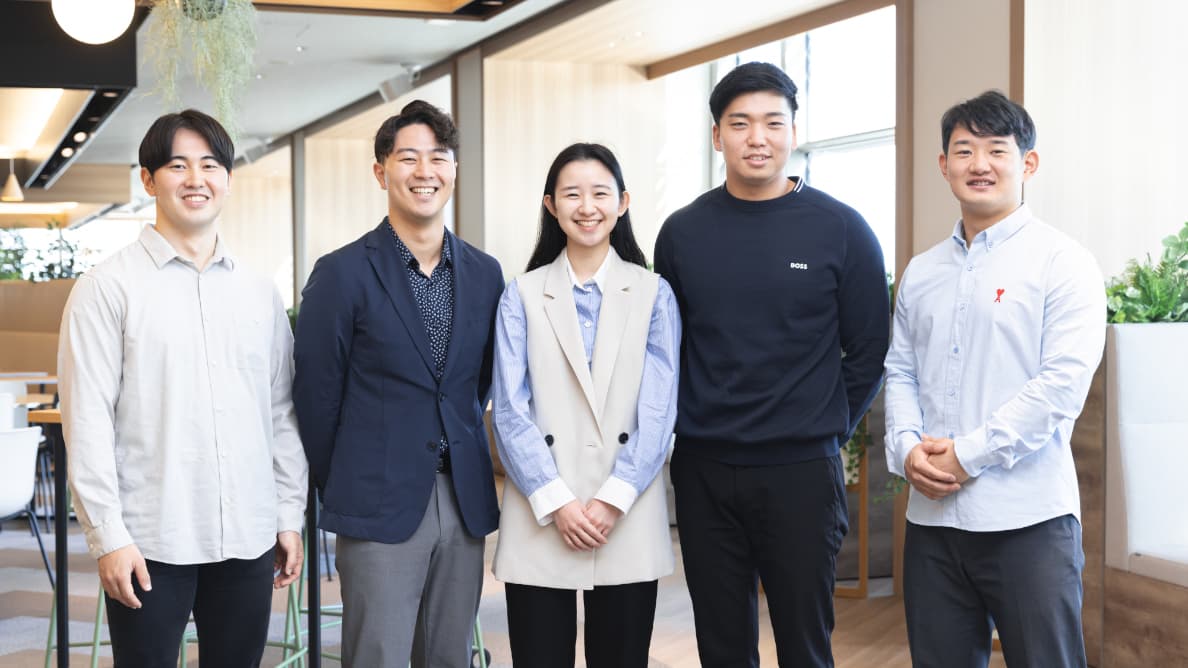
- TOP
- Enriching+TOP
- A solar power plant symbolizing the post-disaster reconstruction of Minamisoma City, Fukushima prefecture
2023.10.1
Business
A solar power plant symbolizing the post-disaster reconstruction of Minamisoma City, Fukushima prefecture

Minamisoma City in Fukushima Prefecture sustained extensive damage from the 2011 Tohoku earthquake and tsunami. The serious impact of the disaster is particularly evident in coastal areas, where work is still underway to repair and improve dikes, disaster-prevention greenbelts, and farmland infrastructure such as canals and demarcations. To help the post-disaster reconstruction of Minamisoma City, Sumitomo Corporation is developing two solar power plants. One is the Minamisoma Mano-Migita-Ebi Solar Power Plant implemented by Solar Power Minamisoma-Kashima, a Sumitomo Corporation group company. The plant started commercial operation on March 20, 2018. I visited the plant in April to cover its dedication ceremony.
This content was originally published in August 2018.
-

Publications Team, Corporate Communications Department
Satoshi Kinoshita,
Joined the company in 2017 and currently is in charge of corporate websites. He spent his four years at university as a highly committed member of the judo club. He is a foodie whose life’s passion is eating out. When he has the chance to travel abroad, he enjoys exploring local cuisine and museums. A favorite destination is Barcelona, and currently topping his must-visit list is Taiwan.

Built for the post-disaster reconstruction of Minamisoma City
On my way to the dedication ceremony venue from Kashima Station on the JR Joban Line, I traveled through a vast field of solar panels belonging to Minamisoma Mano-Migita-Ebi Solar Power Plant. On the day of the ceremony, this massive array of solar panels gleamed in the sun beneath a cloudless sky. A huge wind turbine stood next to the power plant, the juxtaposition of its rotating blades and the sparkling solar panels demonstrating Minamisoma’s post-disaster drive to embrace renewable energy.
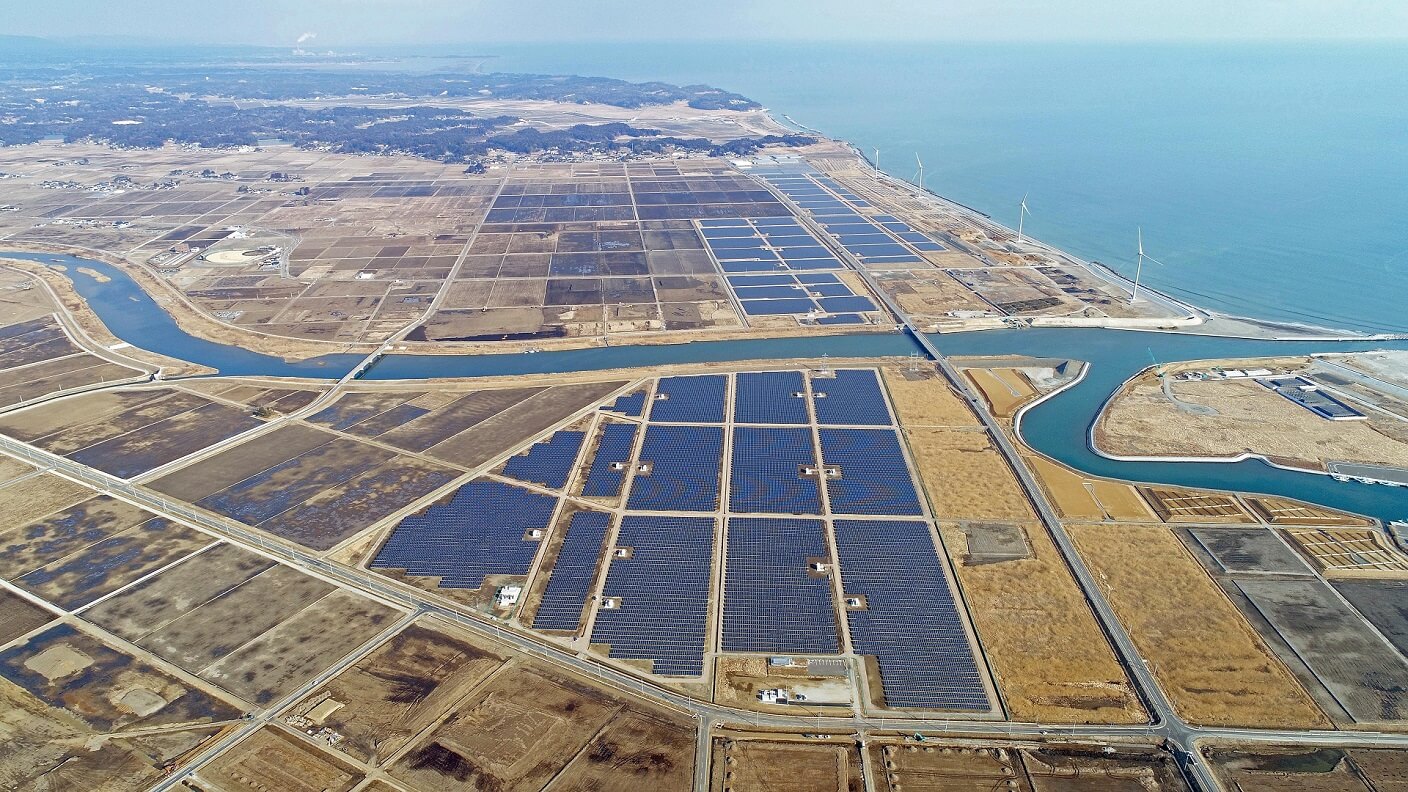
The city laid out its “Renewable Energy Promotion Vision” in October 2012, aiming to cover most of its energy needs with renewables by 2030. The Sumitomo Corporation Group’s two solar power plants in Minamisoma are expected to play vital roles in the realization of this vision, and thus carry the hopes of the local community.
A dedication ceremony to celebrate the completion of the power plant
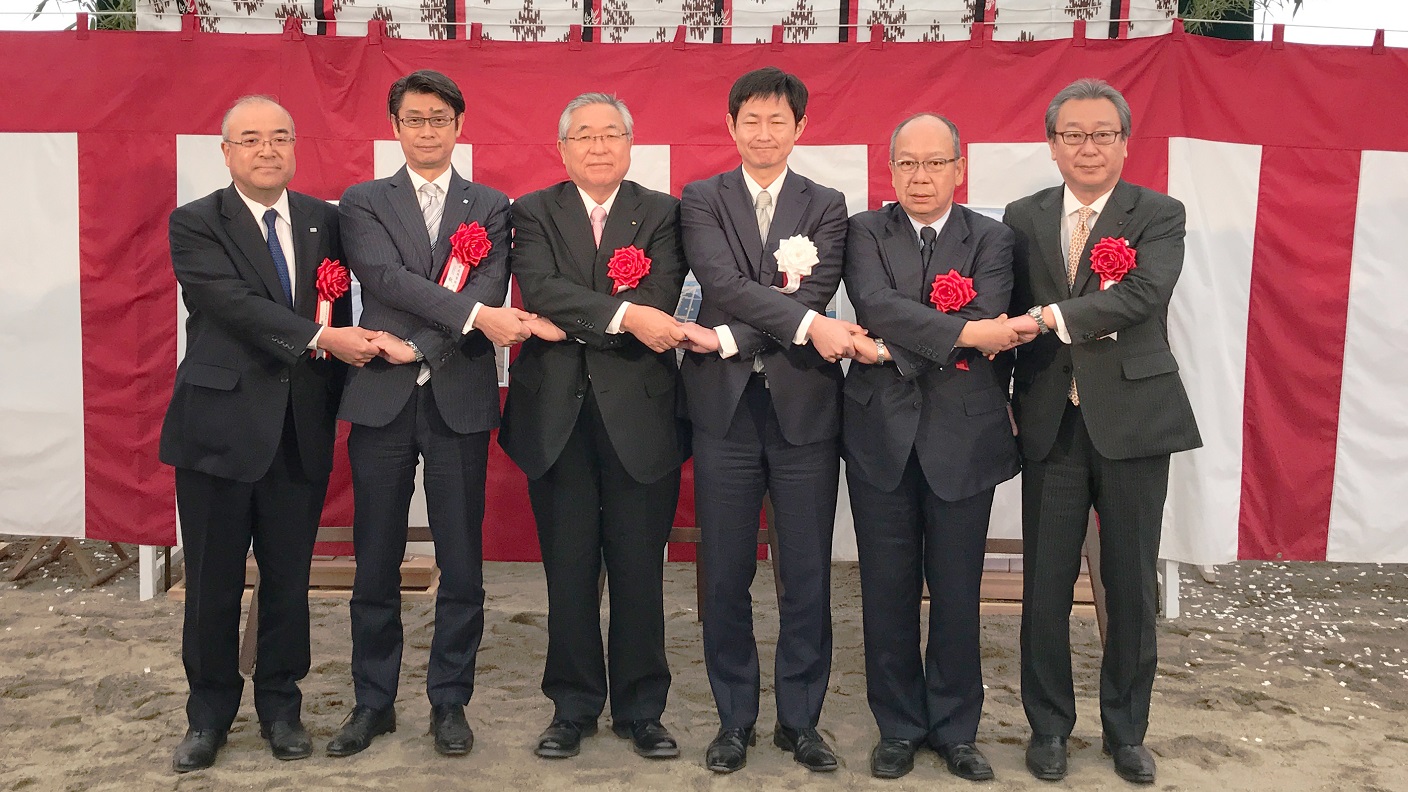
The dedication ceremony to celebrate the completion of the power plant was held at a venue set up nearby. It was attended by companies involved in the project, as well as representatives of TV broadcasters, newspapers, and other members of the press. The ceremony opened with a solemn Shinto ritual intended to bless the completion of the construction work, which had taken almost two years, starting back in May 2016.
During construction, a part of the facility became inundated as a result of a typhoon that hit the area in the summer of 2017. Countering fears of a major delay, construction was completed on schedule thanks to the coordinated recovery efforts of project members, who must have greeted this day with great emotion as they no doubt recalled the obstacles they had overcome to get there.
“The completion of this plant has made the path toward achieving the Minamisoma Renewable Energy Promotion Vision clearer.” said Kazuo Momma, the mayor of Minamisoma City, in his address. Takayuki Hirano, the managing director of Solar Power Minamisoma-Kashima, responded by resolving to “work hard so that the power plant becomes a well-loved member of the local community, and contributes to the recovery and growth of Minamisoma City.” Those of us present got a real sense of how the shared determination among the assembled to rebuild Minamisoma had made possible the completion of the long-awaited facility.
Touring the solar power plant
Following the dedication ceremony, I joined members of the press and other attendees on a tour of the solar power plant. Coming at a total project cost of approximately 22 billion yen, Minamisoma Mano-Migita-Ebi Solar Power Plant is the largest solar power plant in Fukushima Prefecture and among the largest in the Tohoku region. It is what is termed a “mega-solar plant,” boasting an output of 59.9 MW, roughly enough to power 20,000 households.
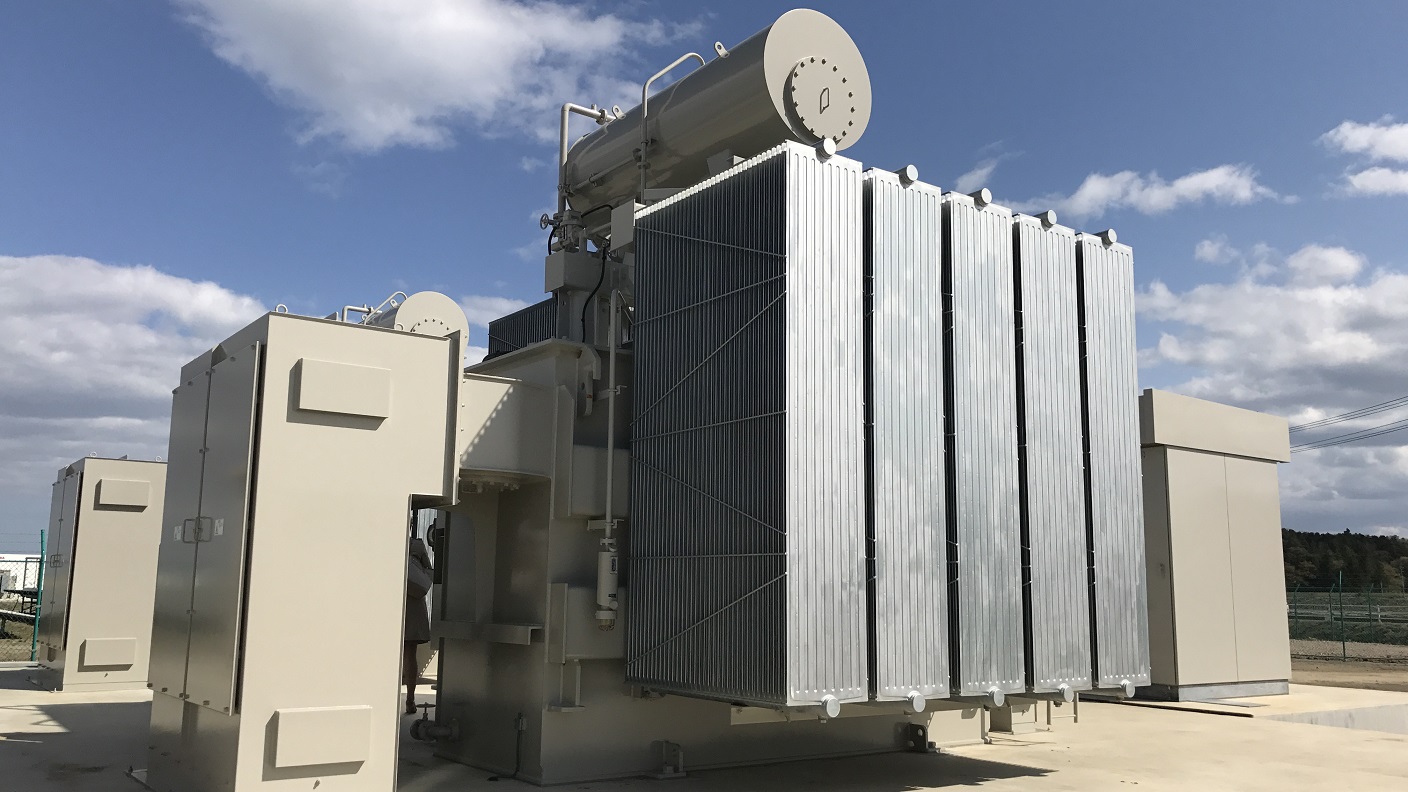
From my vantage point on a deck overlooking the area, solar panels appeared to stretch out endless to almost fill the entire landscape. There were about 220,000 panels in all. Laid end to end, I was told, they would reach Aomori City in the north. (Minamisoma and Aomori Cities are about 350 km apart, roughly the same as the distance between Tokyo and Sendai.) Needless to say, I was newly impressed by the incredible scale of the power plant. The coastal site receives strong winds, which may raise fears about panels collecting grit and dust carried by gusts. I was assured, however, that solar panel efficiency was not affected by normal accumulations of dust, and that rainfall was all that was needed to keep panels sufficiently clean.
Electricity generated by renewable sources is currently eligible for purchase at a fixed rate under a feed-in tariff (FIT) program run by the Ministry of Economy Trade and Industry (METI). Sumitomo Corporation intends to maintain its active role in the operation of this power plant for the next 20 years, continuing its involvement beyond the termination of the current FIT scheme. Covering this project made me aware of how it embodies Sumitomo Corporation’s pursuit of social significance rather than short-term gains, and its commitment to “Harmonious coexistence with the local natural environment,” and “Development of industries and local communities.”
Growing a business loved by local people
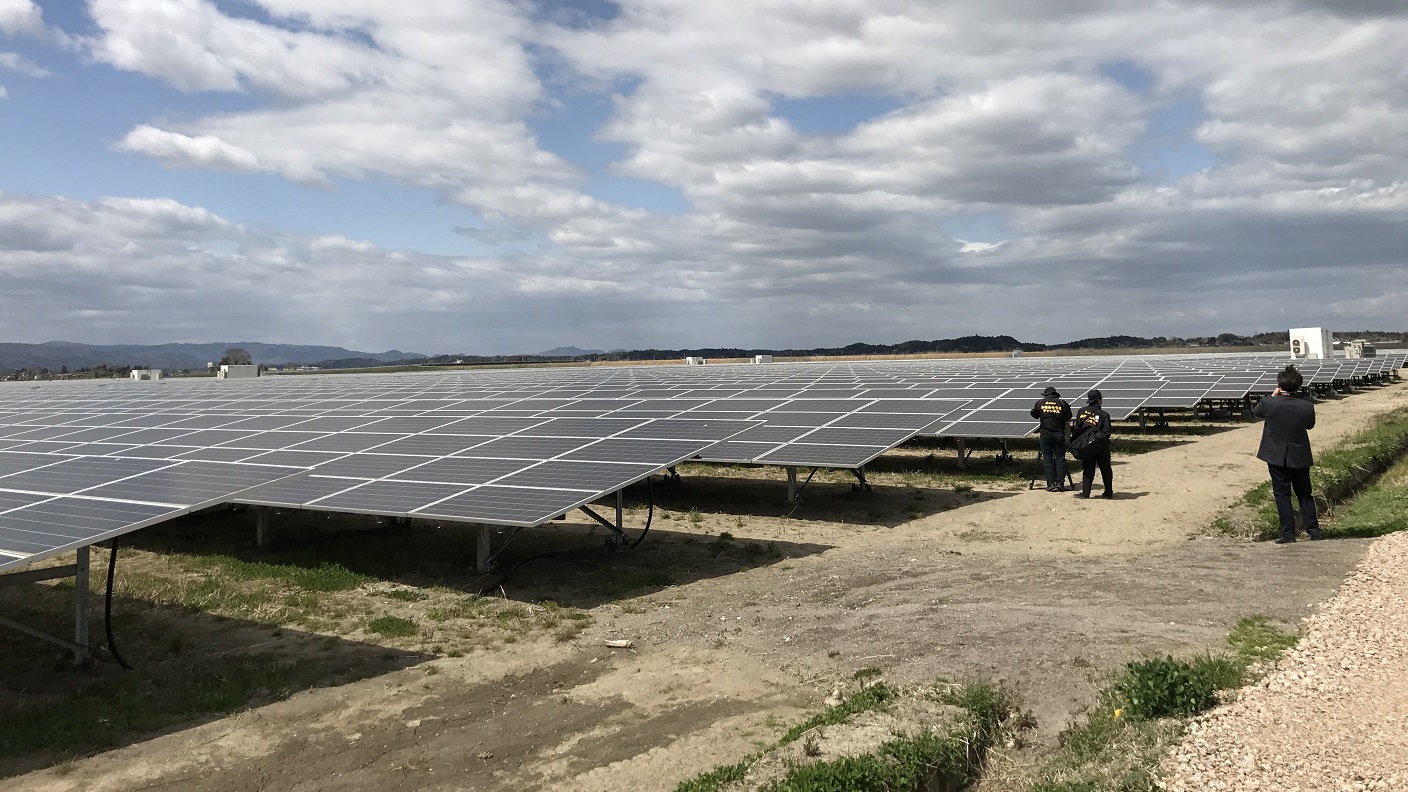
Covering this topic made it clear to me how deeply the project values its relationship with local people. I am convinced that because the rationale for the project is the city’s post-disaster reconstruction, it is designed through and through to serve the community. For example, the power plant is used in environmental education given to children and also as a local tourism resource. It is contributing to local job creation as well by locally recruiting licensed personnel vital to its operation. Also being studied is the possibility of commissioning the cutting of grass—an important task for keeping solar power plants viable on former farming land—to local firms.
For the plant to remain in operation for decades to come, it needs to be rooted in and loved by the local community. Symbolic of Minamisoma’s reconstruction, the sea of solar panels are sure to contribute to the local community over the years to come, and I feel fortunate to have had the opportunity to witness their launch.

